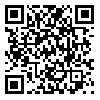BibTeX | RIS | EndNote | Medlars | ProCite | Reference Manager | RefWorks
Send citation to:
URL: http://hnmj.gums.ac.ir/article-1-625-en.html
Body Mass Index and its relation to menopausal women’s quality of life
By: Golmakany A1*, Shariati Sarcheshmeh M1, Marouzi P2, Rezaie Sani T3
1- Department of Midwifery, Instructor, School of Basic Sciences, Islamic Azad University Neyshabur Branch, Neyshabur , Iran
2- Bio statistics(Ph.D), Health College, Mashhad medical science university, Mashhad, Iran
3- Department of Midwifery(BSc), Neyshabur Hakim Hospital, Neyshabur medical science university, Neyshabur ,Iran
Received: 2014/01/04
Accepted: 2014/05/31
Abstract
چمقدمه : نحوه ارتباط والدین با فرزندان با سبک فرزندپروری آنان ارتباط دارد.سبکهای فرزندپروری نقش مهمی در شکل گیری شخصیت بهنجار و نابهنجار در کودکان داشته و در صورت بکار گیری سبکهای ناکارآمد در تربیت کودکان می تواند منجر به پیامدهای منفی متعددی از جمله مشکلات رفتاری در آنان گردد.Introduction: In today’s world obesity has increasing prevalence and its prevalence in menopausal women is more than men. Menopause is the sign of elderly and it’s a biologic and inevitable milestone with noticeable effect on quality of life and knowing the effective factors on quality of life is very important issues in menopausal women’s life.
Objective: The present study aimed to determine the relationship between Body Mass Index (BMI) and Quality Of Life (QOL) of menopausal women in Neyshabur city.
Methods: This descriptive co relational study was conducted on 375 women aging 40-65years from Neyshabur city in 2010 who were chosen by random multiple stage method and had no history of hysterectomy, oophorectomy or hormone replacement therapy. Data were gathered by demographic and the Menopausal Quality Of Life (MQOL) questionnaires in health centers and Mosques. Data were analyzed by Pearson correlation, Chi-square, t-test and linear regression statistical tests.
Rیافته ها: نتایج نشان داد که سبک فرزندپروری مقتدرانه هم با نمره کل مشکلات رفتاری درونی سازی (003/RResults: The mean age of the 375 participants was 55.4±5 year. The Pearson correlation coefficient revealed no significant relation between Body Mass Index (BMI) and menopausal quality of life (P=0.998). Pearson correlation coefficient showed significant relationship between variables of age and exercise and menopausal women’s Quality Of Life (QOL) (p=0.0029, p=0.002 respectively). Also based on linear regression relation existed between age, marital status, smoking, exercise and residency and menopausal women’s Quality Of Life (QOL).
Conclusion: Study results indicated no relation between Quality Of Life (QOL) and menopausal women’s Quality Of Life (QOL) and. Quality of life improved in women who exercised.
Keywords: Menopause, Body Mass Index, Quality of Life
*Corresponding Author: Azar Golmakany, Neyshabur, Azad Islamic University
Email: agolmakany@gmail.com
Received: 2016/02/24 | Accepted: 2016/02/24 | Published: 2016/02/24
| Rights and permissions | |
 | This work is licensed under a Creative Commons Attribution-NonCommercial 4.0 International License. |



